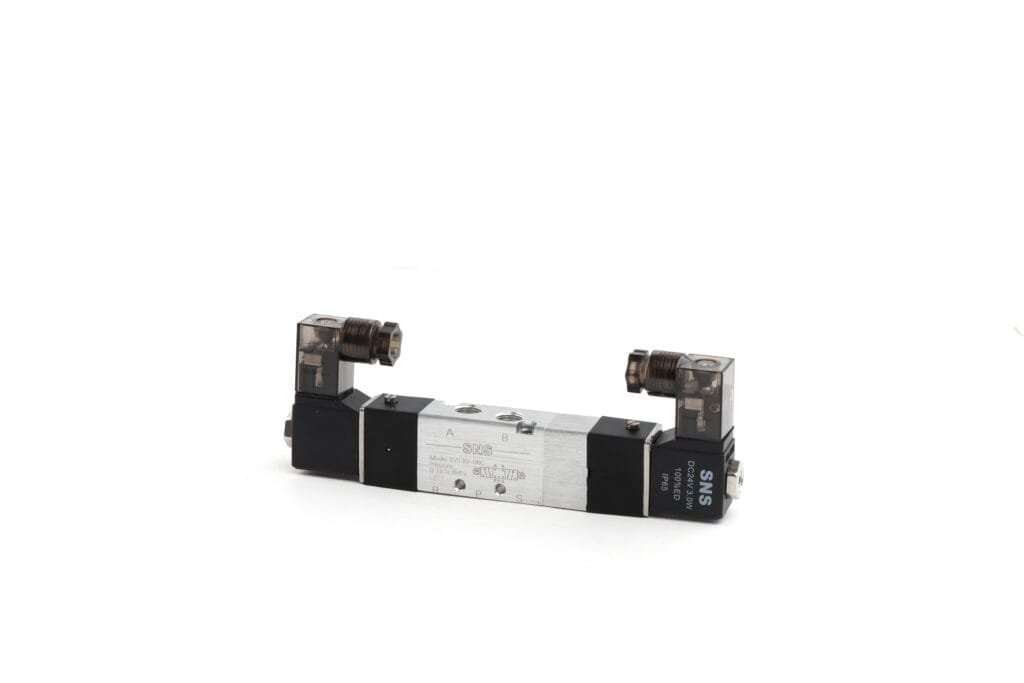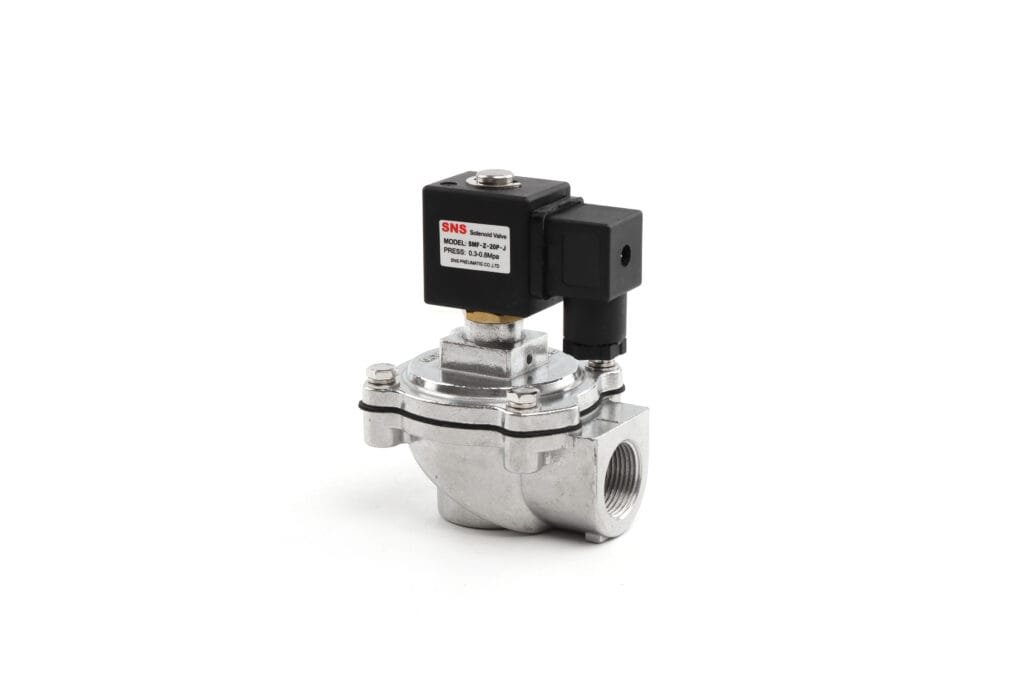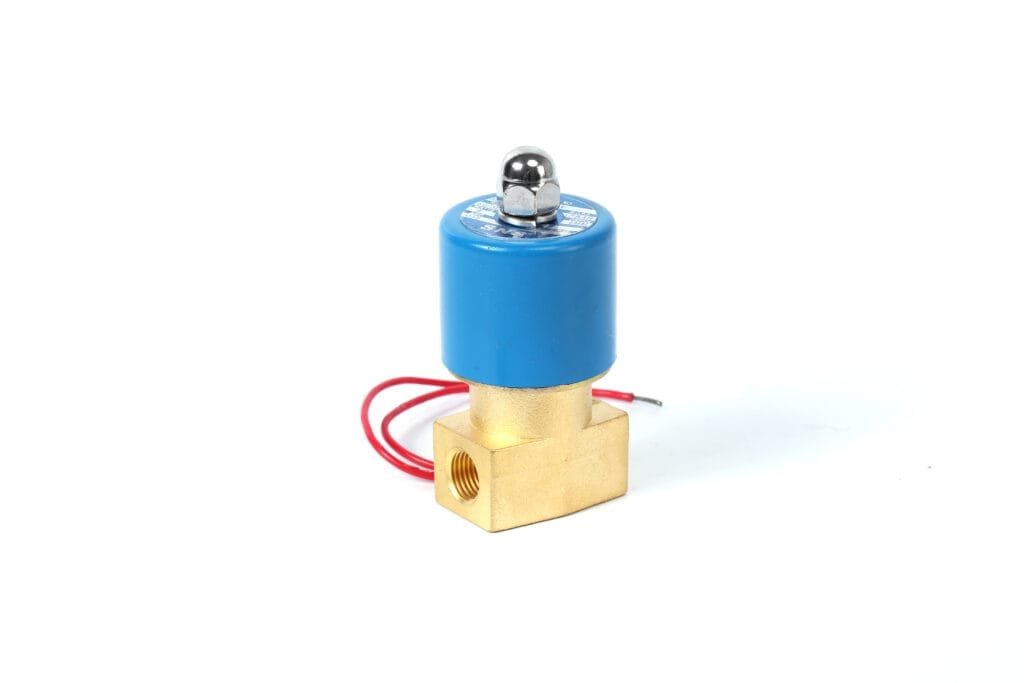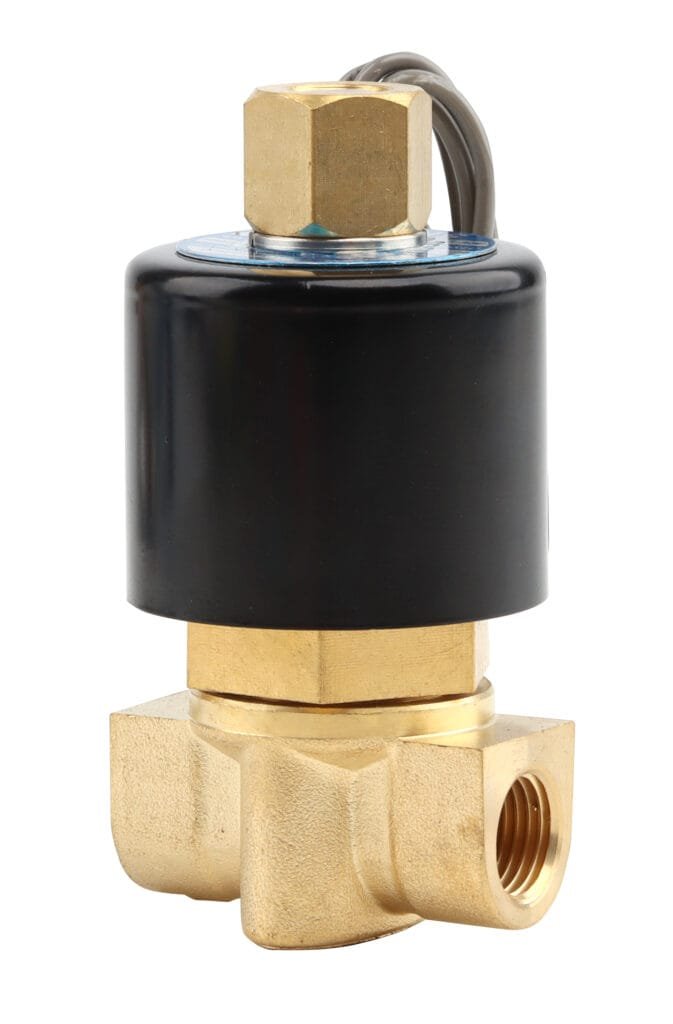Electric Ball Valve vs Solenoid Valve
Electric ball valves and solenoid valves are two distinct types of automated valves widely used in various industrial and commercial applications to control the flow of liquids or gases. While both serve similar functions, they operate on different principles and come with their own sets of advantages and disadvantages.
Understanding the differences between electric ball valves and solenoid valves is critical for engineers, maintenance professionals, and system designers to make informed decisions about which valve is best suited for their specific application needs. Dive into the technical nuances that set these valve types apart, ensuring the efficiency and reliability of your fluid control systems.

What is a Solenoid Valve?
A solenoid valve is an electromechanically operated valve controlled by an electric current through a solenoid. The solenoid is a coil of wire that acts as an electromagnet when energized, creating a magnetic field that moves a plunger attached to the valve. Depending on the design, this motion either starts or stops the flow of fluid. These valves can control a wide variety of gases and liquids, making them versatile components in many industries.
Solenoid valves are preferred for their fast and reliable operation and are commonly used in fluid power pneumatic and hydraulic systems, controlling cylinders, fluid power motors, or larger industrial valves. Manufacturers design solenoid valves for specific fluids and operating parameters; proper selection depends upon pressure range, fluid type, flow rate and control function — from simple on/off to more complex variable flow applications.
Types of Solenoid Valves
Solenoid valves are electromechanical devices designed to control the flow of fluids. They operate using an electric coil with a movable ferromagnetic core (plunger) in its center. In response to an electrical signal, the plunger shifts, which in turn causes the valve to open or close. Different types of solenoid valves are tailored for various applications, ensuring compatibility with intended use cases.
Direct-Acting Solenoid Valves: These valves have a simple design where the magnetic field directly opens the valve. This type typically works best for small flow rates and low-pressure systems since it does not depend on fluid pressure to function.
Pilot-Operated Solenoid Valves: Also known as servo-operated solenoid valves, these rely on fluid pressure to open and close the valve. A pilot orifice is opened by the solenoid when energized, allowing pressure to build and move the main valve plunger. They are suitable for larger flow rates and high-pressure applications.
2-Way Solenoid Valves: Consisting of two ports, one for fluid inlet and one for outlet, these valves are used for enabling or stopping fluid flow.
3-Way Solenoid Valves: With three ports and two valve seats, a 3-way solenoid can distribute fluids among different paths.
4-Way Solenoid Valves: These are often used in actuators or systems requiring alternation between two circuits. Containing four ports for creating two separate circuits, they can divert the flow in multiple directions.

Pros & Cons of Solenoid Valves
| Advantages | Disadvantages |
|---|---|
| Rapid response time | Susceptible to complications with dirty media |
| Simple design leading to compactness | Potential for shorter life due to wear on solenoids |
| Cost-effective for basic control tasks | Continuous power necessary – could lead to high energy consumption over time |
| Ideal for clean liquids or gases | Risk of overheating with prolonged energization |
| Easily integrated into automated systems | Typically not suitable for throttling or proportional flow control |
What is an electric ball valve?
An electric ball valve is a type of motorized valve that integrates an electric actuator with a spherical disc to control the flow of liquids, gases, or steam. The term “ball” in its name refers to the rotatable ball at the center of the valve which has a bore through it. When aligned with piping, this bore allows media to pass through unimpeded; rotated 90 degrees from open, it presents a solid face and stops flow entirely.
This kind of valve achieves on/off service or, in some more advanced cases, modulation of flow. The electrical actuator that operates the ball is typically responsive to input voltage signals and can also be equipped with manual overrides, position indicators and other specialized features according to specific application requirements.
A notable feature of electrically actuated ball valves is their tight shut-off capability which renders them highly effective for gas and liquid services. Their simplicity in design ensures lower maintenance requirements when compared to other types of valves.
Types of Motorized Valve
Motorized valves, often referred to as electric ball valves, are classified based on their operation mechanism and the number of directions they regulate the flow. The primary types include floating ball valves and trunnion-mounted ball valves.
A floating ball valve utilizes a hollowed-out sphere (ball) which floats between the seat rings and is operated by a motor-driven actuator. Upon actuation, the motor rotates the stem, which in turn moves the ball into position. These types are commonly used for small to medium-sized pipelines.
Trunnion-mounted ball valves feature a ball that is anchored at both top and bottom, making them suitable for larger and higher-pressure applications. Trunnion designs prevent excessive strain on the valve seats, thus enhancing durability. Moreover, some motorized valves have additional design variations such as full-bore for optimal flow rates or reduced bore for controlling flow rates.
Multi-port motorized valves offer more complex control over fluid direction with three-way and four-way options available. Three-way valves divert or mix flows within one body design while four-way configurations can direct fluids in multiple directions sequentially without mixing them.
There are also failsafe electric actuators that will shut off or open a valve during power failure situations to prevent accidents or damage to a system. Such designs may utilize batteries or capacitors to maintain functionality during outages.
Lastly, smart motorized valves incorporate feedback signals that allow users to remotely monitor status and adjust parameters accordingly. These advanced versions incorporate sensors and communication capabilities that promote automation efficiency across various industries.
| Type of Motorized Valve | Description | Applications |
|---|---|---|
| Floating Ball Valve | Uses a freely floating ball design; best suited for smaller applications with lower pressure ratings. | Residential plumbing systems, small industrial applications |
| Trunnion-Mounted Ball Valve | Features a fixed ball design supported by trunnions; handles higher pressures and larger pipeline sizes efficiently. | Oil & gas sector, high-pressure industrial processes |
| Multi-Port Motorized Valve | Has more than two ports facilitating directional control of flows such as diverting or mixing. | Chemical processing plants, food & beverage industry |
| Failsafe Electric Actuator | Equipped with a mechanism to remain operational (open/close) even during power failures using alternative power sources like batteries or capacitors. | Critical infrastructure systems like water treatment plants |
| Smart Motorized Valves | Comes with integrated sensors and communication interfaces for remote monitoring and adjustment. | HVAC systems automation, remote-controlled process industries |

Pros & Cons of Ball Valves
| Pros | Cons |
|---|---|
| Durability | Not ideal for throttling applications |
| High shut-off capability | Poor fine flow control |
| Tight sealing with low torque | Larger size needed for full port option |
| Quick operation (quarter turn) | Risk of water hammer |
| Minimal maintenance required | Special materials may be needed for extreme conditions |
| Good for both liquid & gas | Can be bulky in confined spaces |
Electric Ball Valve vs Solenoid Valve
When comparing electric ball valves with solenoid valves, several key distinctions must be made to understand their functionality and suitability for different applications.
| Feature | Electric Ball Valve | Solenoid Valve |
|---|---|---|
| Control Type | On/off and modulating | Primarily on/off |
| Actuation Speed | Typically slower than solenoid | Faster than electric ball valve |
| Flow Rate | High since it offers little resistance when fully open | May be limited due to design constraints |
| Dirty Media Handling | Generally more tolerant | Less tolerant; prone to clogging |
| Power Consumption | Electricity used only during adjustment | Continuous power needed unless de-energized |
| Failure Position | Fail-open or fail-closed adjustable | Normally comes in NC or NO configurations |
| Operating Pressure | Better suited for high-pressure operations | Limited by design |
| Cost | More expensive upfront cost but potentially lower lifetime operating costs | Lower initial cost but could incur higher energy expenses |
| Size | Generally larger | Compact form factor |
| Maintenance | Typically requires less frequent maintenance | Can require more frequent maintenance if used with dirty media |
On/Off Control vs Proportional Control
In the realm of valve operation, the distinction between on/off control and proportional control is pivotal. Solenoid valves are intrinsically designed for rapid on/off control; they are either in a fully open or completely closed position, activated by an electromagnetic solenoid which shifts the valve’s internal components to allow or inhibit flow. This binary mode of operation is well-suited for applications requiring swift and frequent start-stop actions.
Conversely, electric ball valves can offer proportional control, which allows them to not only provide on/off functionality but also to regulate flow by adjusting to intermediate positions. Motorized actuators enable precise positioning of the valve’s ball, which can be modulated to control the volume of fluid passing through, providing variable flow rates based on demand.

Speed
When comparing the operation speed between electric ball valves and solenoid valves, it’s important to understand that speed in this context refers to how quickly the valve can change from its open to closed state or vice versa. Solenoid valves are renowned for their rapid actuation, typically operating in milliseconds to a few seconds. This makes them ideal for applications where swift response times are necessary. Electric ball valves, on the other hand, have a slower operation time that usually ranges from a couple of seconds to several minutes. Their actuation time depends largely on the size of the valve and the motor’s power; larger valves or those with reduced motor capacity will naturally take longer to adjust.
This key operational difference is attributed to their distinct mechanisms: solenoid valves rely on electromagnetic forces that directly shift the valve element, allowing for quick changes in state. Electric ball valves utilize an electric motor which gradually rotates the ball into position, thus requiring more time to fully open or close.
Flow rate
The flow rate is a critical factor to consider when selecting between an electric ball valve and a solenoid valve, as it signifies the volume of fluid that can pass through the valve over a given period. Electric ball valves typically offer a higher flow rate due to their full bore design, which allows an unrestricted path for fluid to flow when the valve is in its open position. This attribute makes them suitable for applications where maintaining a high flow rate is essential.
On the other hand, solenoid valves can restrict the flow because they often have smaller orifices and are designed around the electromagnetic actuator’s size and strength limitations. The internal design of solenoid valves usually results in turbulent flows, which may reduce the total throughput compared to an equally sized ball valve. Solenoid valves are ideal for precise control but may not be suitable for systems where a high flow rate is required.
Dirty Media
When selecting between electric ball valves and solenoid valves, an essential factor to consider is the media that will flow through the valve. Dirty media can adversely affect the functionality of a valve, leading to premature wear or failure.
Electric ball valves possess a robust structure capable of handling fluids with higher levels of particulate matter or contaminants. The design allows for the ball to rotate, enabling solids to move through the valve without causing significant damage. This characteristic makes them suitable for applications that involve unclean or viscous liquids.
On the other hand, solenoid valves are more sensitive to dirty media. Their operation depends on a plunger that opens and closes to control flow. Particulates in the media can obstruct this mechanism resulting in malfunctions or a complete inability to actuate. For this reason, solenoid valves are preferable for use with clean fluids where there is minimal risk of contamination or particle obstruction.
Power Consumption
When considering the power consumption between electric ball valves and solenoid valves, there are distinct differences to note. Solenoid valves, which operate using an electromagnetic coil to move a plunger and in turn change the state of the valve, typically consume less power. This is because solenoid valves only require energy when switching their position and can remain open or closed without continual power, with certain designs called ‘latching’ types maintaining position even after power is removed.
On the other hand, electric ball valves use an electric motor that rotates a ball with a bore through it to control flow. These types of valves generally consume more power since the motor must be energized any time the valve position changes and often while it maintains its position. However, this varies heavily depending on the size of the valve and the specific application it’s being utilized for.
To compare them fairly regarding power consumption, one must take into account factors such as cycle frequency (how often the valve switches state) and holding requirements (if the valve needs to maintain its position for extended periods). In applications with infrequent cycling where a valve remains in one position most of the time or latching solenoid valves can be used, solenoids may present clear advantages in terms of energy efficiency. Conversely, if a process involves frequent cycling or precise positional control beyond simple open/close functionality, then electric ball valves might be more suitable despite higher energy usage during operation.
In summary, for intermittent operation without holding requirements, solenoid valves are typically more energy-efficient. In contrast, electric ball valves tend to draw more power especially under continuous or modulating service.

Failure Position
In the event of a power failure or loss of control signal, the position that a valve defaults to is known as its failure position. This is a critical aspect of valve design because it can determine how a system responds to an unexpected shutdown and can have implications for system safety and damage prevention.
Solenoid valves typically default to one of two failure positions: “normally closed” (NC) where the valve reverts to a shut position when power is lost, or “normally open” (NO) where it remains open in the same circumstances. The choice between NC and NO failure modes depends on the specific safety requirements of the application.
Electric ball valves, on the other hand, are generally equipped with a spring-return mechanism or battery backup that sets the valve into a predetermined safe position upon loss of power. Known as “fail-safe” positions, these settings are either fail-closed or fail-open, depending on what condition would be considered safer for the given process should there be any interruption in power.
Operating Pressure
The operating pressure is a crucial parameter to consider when deciding between electric ball valves and solenoid valves, as it directly relates to the capabilities of the valve under different system pressures.
In terms of solenoid valves, they are well-suited for a variety of low to medium pressure applications. Their design allows them to operate effectively in systems where the pressure can range from vacuum levels up to several hundred psi, depending on the specific model and construction. Solenoid valves typically employ a plunger that is actuated by an electromagnetic coil to open or close the valve, which is ideal for relatively clean media at specified pressure ranges.
On the other hand, electric ball valves are known for their ability to handle higher pressures with greater ease compared to solenoid valves. Electric ball valves utilize a motor-driven ball mechanism that opens and closes the valve’s passage—this robust architecture enables them to withstand operating pressures that often exceed those feasible for solenoid valves. Because of their sturdy build, they are favored in applications with high-pressure demands.
Cost
The cost of electric ball valves and solenoid valves can vary significantly depending on various factors such as material construction, size, pressure rating, and additional features. Solenoid valves are generally less expensive than electric ball valves for comparable specifications. They typically have a lower upfront purchase price due to their simpler design and ease of mass production.
Electric ball valves, on the other hand, incorporate an electric motor which tends to drive up their initial cost. However, they might offer greater value over time with benefits such as higher durability and longer service life when compared to solenoid options in certain applications.
When considering cost, it’s not just about the immediate purchase price; one should also contemplate the total cost of ownership which includes installation, operation, maintenance, and potential downtime costs. For instance, solenoid valves might require more frequent replacement or could incur higher operating expenses in applications where proportional control is necessary since they are primarily designed for on/off service.
In summary, while solenoid valves can often present a lower initial investment, electric ball valves may prove to be more economical in the long run for applications demanding precise flow control or those subject to harsh operational conditions that could result in wear and tear on less robust valve types.

Size
When considering the size of electric ball valves and solenoid valves, there are distinct differences attributable to their design and operational mechanisms. Electric ball valves typically consist of a ball with a hole through its center, actuated by an electric motor. The entirety of the assembly encompasses not only the valve body but also the electric actuator mounted on top, which necessarily increases its overall size. Consequently, this type of valve requires more space for installation compared to solenoid valves.
Solenoid valves, on the other hand, have a more compact form factor due to their simplistic design consisting of a coil, plunger, and valve body. This streamlined structure enables them to fit in tighter spaces where deploying larger equipment might be challenging. Particularly useful in applications with limited spatial availability, solenoid valves offer installation advantages by occupying minimal real estate within systems.
Maintenance
The maintenance of electric ball valves and solenoid valves is a key consideration in their long-term performance and reliability. Electric ball valves are relatively low-maintenance due to their simple mechanical design. They have few moving parts, which reduces the points of potential failure. However, periodical checks are recommended to ensure proper functioning, such as testing the electric motor functionality and inspecting for any mechanical wear.
Solenoid valves require more frequent maintenance than electric ball valves. The coil can burn out if energized excessively without a complete valve opening or closure. Additionally, the plunger and orifice can become clogged with debris, necessitating regular cleaning especially in applications handling dirty media.
Both types of valves may need periodic seal replacement to prevent leaks, especially in systems where they are subject to frequent cycling or aggressive media. The difficulty of this process varies depending on the valve design and installation.
Proper maintenance includes ensuring clean power supply for both types of valves; voltage spikes can damage solenoid coils while fluctuating power can affect the performance of an electric motor in a ball valve.
Materials
The materials used in the construction of electric ball valves and solenoid valves are critical for their performance, durability, and suitability for various applications. Electric ball valves typically consist of a valve body that can be made of metal such as brass, stainless steel, or PVC that houses a rotatable ball with an orifice. The choice of material is important not only for cost considerations but also for resistance to the media being controlled — including factors such as temperature, chemical reactivity, and potential for corrosion.
Solenoid valves, on the other hand, have bodies that may be constructed from brass, stainless steel, plastic or even specialized alloys designed for harsh environments. The plunger inside a solenoid valve is often made of stainless steel or iron with various coatings due to its need to respond to magnetic fields. Seals within both types of valves – electric ball valves and solenoid valves – will use elastomeric compounds like Buna-N (Nitrile), EPDM or Viton which provide varying degrees of chemical compatibility and temperature resistance.

Applications
Electric ball valves and solenoid valves are implemented across a myriad of industries due to their specific operational capabilities. Solenoid valves are widely used in fluid power pneumatic and hydraulic systems, controlling cylinders, fluid power motors or larger industrial valves. Industries that rely heavily on these include manufacturing, oil and gas, pharmaceuticals, and medical equipment sectors. Their quick actuation makes them suitable for emergency shut-off applications where immediate cessation of flow is necessary.
On the other hand, electric ball valves are favored in applications requiring precise control over long-term periods due to their ability to modulate flow and maintain positions even without power. Water treatment plants, HVAC systems, irrigation systems, and process industries often use these for their robust design that can handle slurry and vicious media. They are also seen in situations where it’s crucial to avoid fluid hammer effects or where solenoid valves might struggle with the complexity of the media being controlled.
Below is a table summarizing key application areas for both types of valves:
| Valve Type | Application Areas |
|---|---|
| Solenoid Valves | Pneumatic/hydraulic systems, emergency shut-offs, manufacturing processes, oil & gas operations |
| Electric Ball Valves | Water treatment, HVAC control systems, irrigation management, handling viscous or slurry media |
In conclusion
In summary, while both electric ball valves and solenoid valves serve the critical function of controlling fluid flow, their operational differences make them suitable for distinct applications based on factors like required precision, pressure handling, and response time.
To determine the most effective valve solution for your system, consider the unique requirements of your application and consult with industry experts. Explore our comprehensive range of valve solutions today to find the perfect fit for your fluid control needs.



